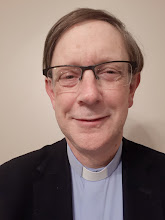I got up early in the morning and took the early bus to the King Hussein/Allenby Bridge. Everything went without a hitch and I was in Jerusalem by 11am. I did some repacking and organising and headed off to the Central Bus Station to buy a return ticket for Massada. I had a while before the bus was leaving, so I left the bus station and bought some lunch and dinner, as the internet had said that the Massada Hostel did not serve dinner.
Massada was one of the fortified citadels of King Herod the Great, and perhaps his most forbidding and secure fort. Before he was king he left family members here to protect them while he continued on to establish the kingdom. He developed it so that he had a winter palace there as well as amazing storage of water, weapons, food and everything necessary to endure a long siege. In the end, it was not King Herod who was besieged here, but Jewish partisans after the destruction of Jerusalem by the Romans in 70AD following the first Jewish revolt (66-70AD). Rebels from Jerusalem joined up with the partisans who had taken the stronghold over from the Roman garrison, and they held out for some 4 years there.
Massada looks impregnable from the Dead Sea (eastern) side (the side from which the photo below was taken), but it was finally captured from the Arad (western) side of the mountain after a lengthy siege.
We travelled down the Dead Sea route to Massada, and the bus took us almost to the door of the hostel. On the bus I met a young American called Michael, who was on a long tour prior to starting graduate law school. He was going to Massada too, and was planning to climb it the next morning, so we agreed to do that together.
We gathered at 5am with our torches, ready to climb the 'snake path' to the top of the mountain and greet the dawn. It was tough going climbing up, but satisfying to make it to the top. There the view was amazing. We watched as the sun rose over the hills of Jordan beyond the Dead Sea.
I didn't expect Massada to be so large, but it was a very extensive site - 650m x 300m. At the time of the siege, there were almost 1,000 rebels living there in buildings on the mountain top and in rooms that were built into the perimeter walls.
The Romans set up camps around the base of the mountain, which are still visible today - and are in fact parts of the best preserved Roman siege works in existence (note the two squares on the foothills close to the mountain, which are two of the camps that have been excavated).
The Romans could not scale the walls, so they spent ages building a huge earthen ramp, so that they could bring up a battering ram to breach the walls. As you can see, the ramp is still there.
The Romans succeeded in breaching the wall and, according to the Jewish historian Flavius Josephus, they decided to retire for the night and take the stronghold the next day. During the night the 960 people living on Massada decided to commit suicide rather than be taken by the Romans. Whether or not this is actually what happened (and so much in this land is political - both the claims that it did and that it did not), the staunch resistance of the partisans and their determination to die rather than surrender has become a formative story for modern Jewish Israelis.
I spent quite a while exploring the ruins and then headed back to the Youth Hostel to collect my things before taking the bus back to Jerusalem.
Since I had started so early I was back in Jerusalem by lunch time. So I decided that I would take the opportunity to see the Yad Vashem Holocaust Memorial. This is one of the things I had promised myself I would do when I was planning to visit Jerusalem. Yad Vashem do not allow photographs, so there is no visual record of it here.
The memorial was a museum with a very engrossing and moving account of the holocaust and its causes. My guide book to Israel said that I should set aside 3 hours to see it, but I had an audio guide, and 4 and a half hours later I was still there. I could have stayed longer, but I needed to be back at St George's College for the initial reception for my next course, so I headed off and got to the course reception just in time.






3 comments:
Boy you are getting good at blogging! What I also like are the fantastic photos. Every thought of being the official ordained diocesan photographer!!
I agree with Murray - although Chris is getting a little twitchy that you're going to do him out of a job!
You really capture the feel of each of the places. I know the Massada story, of course, but I didn't realise that the old Roman earthworks are still there. That's rather incredible, that earthworks should have survived so long!
Thinking of you.
Sr Therese
Thanks for your comments about the photos. Actually I owe a lot to the Picasa programme that improves the exposure etc of your photos for you! Next post soon!
Peter
Post a Comment